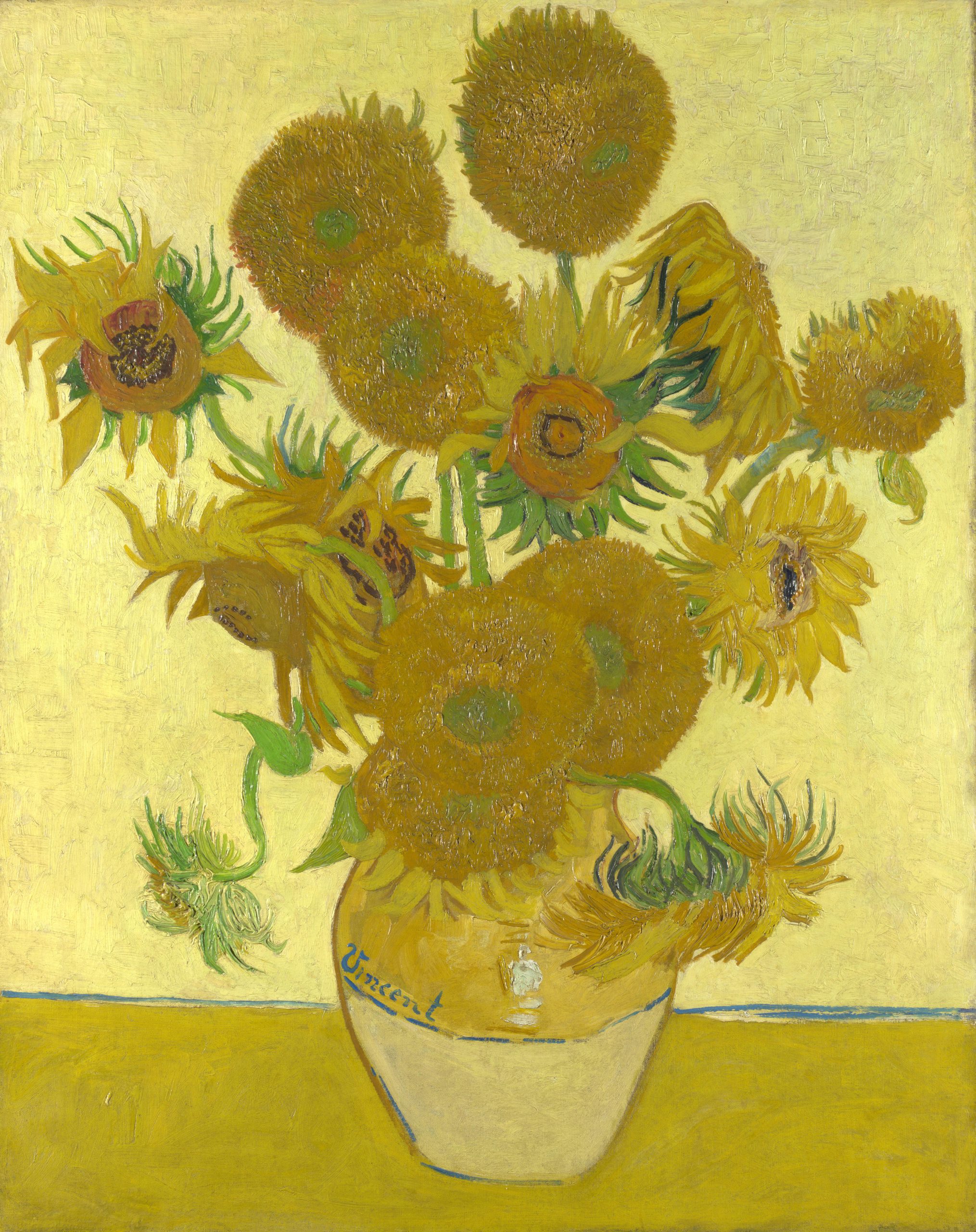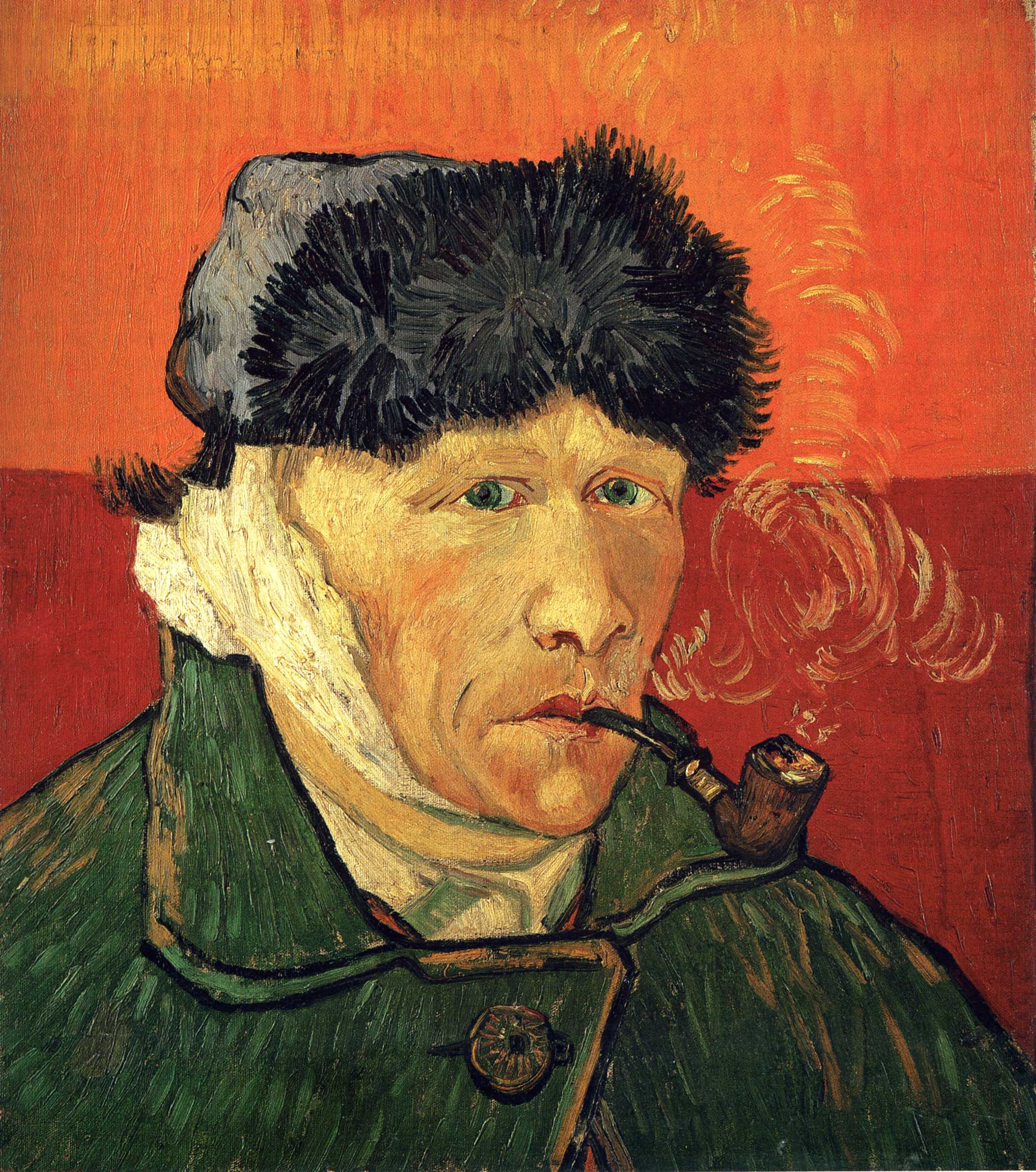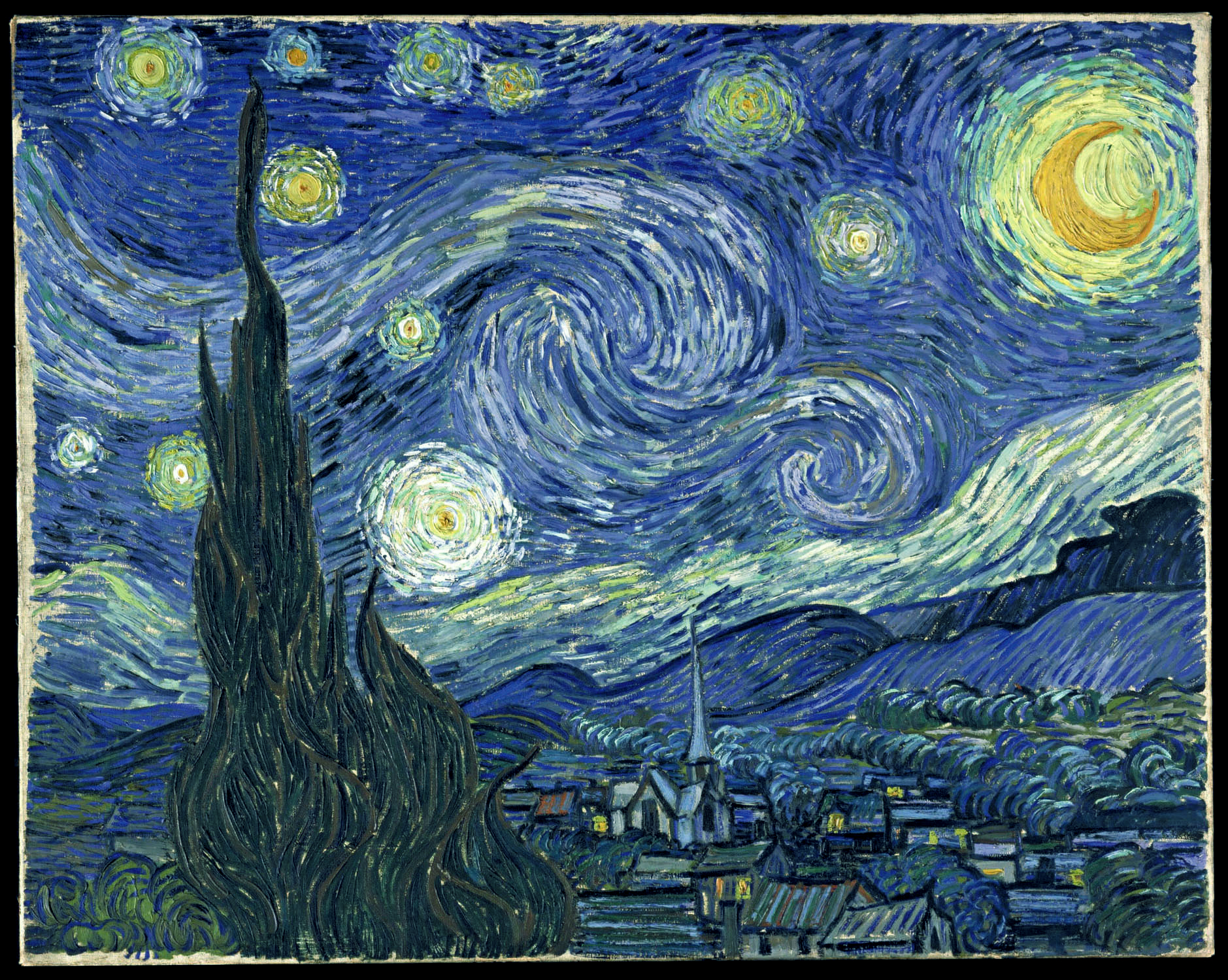170th anniversary of Vincent van Gogh‘s birth
By Oksana Kopenkina, art analyst and founder of the Arts Diary website
Vincent van Gogh searched for his destination for a long time. He started painting at the age of 27. And with all his passion he devoted himself to art. 10 years working at the limit. He was torn, shaking his physical and mental health. But in this fire of self-immolation, he created one masterpiece after another. “Better to do nothing than to express yourself weakly,” Van Gogh believed.
True, no one seriously took his efforts. Many of his paintings were destroyed by those to whom he gifted them. Even his own mother, when moving to another city, left dozens of her son’s paintings abandoned. All of them disappeared without a trace.
And Van Gogh himself often sold them for a penny to a junk man, who resold them for reuse to other artists.
Despite all these losses, 3000 of his works reached us. Among them – 800 oil paintings!
Here are just five of his masterpieces.
Sunflowers (August 1888)
August 1888… For several months, Van Gogh has been living in the south of France. In the city of Arles. He came here to find bright colours. Here he created a series of paintings with “Sunflowers”.
 The London version is one of the most circulated. We meet her on bags, postcards, or phone cases.
The London version is one of the most circulated. We meet her on bags, postcards, or phone cases.
It is surprising that ordinary flowers have become almost a symbol of all world painting. What is so unusual about them?
The pot and background are drawn very schematically. It is not clear whether this is a table, or a distant horizon and sand.
Flowers are not beautiful. Some of them are with ragged petals. And the majority are mutating at all.
Please note that they are more like asters than sunflowers. Such flowers are infertile and occasionally appear among healthy ones.
Maybe that’s why “Sunflowers” often cause conflicting feelings? On the one hand, Van Gogh wanted to show the beauty of our world. He liked the sunflowers, because they benefit the person. But on the other hand, inadvertently chooses infertile flowers.
This is very similar to the tragedy of the artist himself. He longed to be of service to others. But the reactions of people to his paintings each time showed only one thing: his efforts were fruitless.
He did not dare to dream that his paintings would please millions of people.
Cafe Terrace at Night (September 1888)
Those who have been to Arles will immediately notice how the city in the paintings of Van Gogh differs from the real city.
It was an industrial, dirty town. But with an ancient history. The Roman amphitheatre, which resembles the Colosseum, has been preserved in the city centre.
This is strange, but you will not find this amphitheatre in any Van Gogh painting. Although he captured almost every corner of Arles. But the main attraction of the city passed by!
 This is very characteristic of Van Gogh. He looked past everyday things. He saw the most unusual. He saw the soul of flowers and stones, but ignored the obvious.
This is very characteristic of Van Gogh. He looked past everyday things. He saw the most unusual. He saw the soul of flowers and stones, but ignored the obvious.
He wrote a cafe for three nights in a row. Right in the open air under the night sky. Have you ever seen an artist painting at night?
But this is again the unusualness of Van Gogh.
He believed that night is richer in colours than day. And he was able to prove this “ridiculous” statement with his “Cafe Terrace”.
There is not a single drop of black paint in the picture. Thickly applied strokes make yellow and blue even brighter. Violet and orange reflections on the pavement accompany these colours.
This is one of the most striking and positive works of Van Gogh.
Self-Portrait with Bandaged Ear and Pipe (January 1889)
The Self-Portrait with Pipe was written at Arles Hospital. The artist got there after his story about a cut off ear.
It all started with the arrival of Gauguin. Van Gogh wanted to create a workshop school, seeing Gauguin as its leader. They began to live and work under one roof.
Van Gogh was very impractical in everyday life. The neat and collected Gauguin was annoying. Van Gogh was too emotional, argued to the point of exhaustion. Gauguin was self-confident and could not stand it when anyone doubted his opinion. Can you imagine what it was like to live for such people together?
When Van Gogh realized that he and Gauguin could not get along together, he had a nervous breakdown. He pounced on a friend with a razor (according to Gauguin). He stopped Vincent with his menacing look.
Then Van Gogh directed aggression on himself, cutting off his earlobe. Such a gesture may seem very strange. If you do not know one feature of Arles.
In the already mentioned amphitheatre there was a bullfight. But it was more humane than in Spain. The defeated bull had its ear cut off. Van Gogh cut off his ear, considering himself a loser.
This story was only the last straw. Van Gogh’s nervous system by that time was greatly shaken by the frantic pace of work and constant malnutrition.
Once he worked four days without sleep, having drunk 23 cups of coffee during this time!
And after the first nervous attack, Van Gogh creates his strange self-portrait.
It is written in complementary colours. These are colours that reinforce each other. Red becomes even more red if it is next to green. But this colour enhancement is painful for eyes. Colours become too flashy. They convey cacophony in the soul of the artist.
Starry Night (June 1889)
The story with a cut off ear really scared Van Gogh’s neighbors. They wrote a petition demanding the expulsion of the “madman” from Arles. He obeyed. And he voluntarily left for a mental hospital in the small town of Saint-Remy.
Here was written one of his most famous masterpieces, The Starry Night.
This is one of the few works that he wrote not from nature. Van Gogh was not allowed to leave the hospital at night. Only during the day, accompanied by a paramedic.
 Therefore, The Starry Night was created using imagination. Only from the window of his chamber did Van Gogh see a piece of sky and star. The brightest star in the sky of Vincent is Venus, which that month was visible to the naked eye.
Therefore, The Starry Night was created using imagination. Only from the window of his chamber did Van Gogh see a piece of sky and star. The brightest star in the sky of Vincent is Venus, which that month was visible to the naked eye.
Van Gogh believed that everything in our world has a soul. Both a flower and a stone. Even space breathes. This he conveyed in his Starry Night. He achieved this with an unusual arrangement of strokes around moon and each star. The twists helped make the sky “alive.”
Nerve attacks receded. Van Gogh found hope that the disease was released. Soon he will leave the medical institution and move to another town of Over.
Almond Blossoms (January 1890)
Van Gogh painted the picture as a gift to his brother, whose son was born. He was named after his uncle, Vincent.
Van Gogh wanted young parents to hang a picture above the bed. Flowering almonds mean the beginning of a new life.
The picture is very unusual. The artist chose the angle, as if lying under a tree and looking at branches against the sky.
The picture is decorative. After all, Van Gogh created them to decorate the housing of ordinary people with modest means. It was unlikely that he imagined that his paintings would be accessible only to the very rich.
Six months after writing The Almond Blossoms, Van Gogh will die. According to the official version, it was suicide.
The version of suicide is rarely disputed. After all, it made the legend of Van Gogh more dramatic. This only fuelled interest in artist, and at the same time increased the value of his paintings…
But here is the strange thing. In the last months of his life, his work was one more positive than the other. Is “Almond Blossoms” looks like the work of a man thinking of suicide?
Moreover, in Auvers, where he moved, his loneliness receded. Here he found many friends. His paintings interested others. Enthusiastic reviews began to appear in the press.
“In my opinion, I am often rich as Croesus, not in money, but (though it doesn’t happen every day) rich, because I have found in my work something to which I can devote myself heart and soul, and which gives inspiration and significance to life. Of course, my moods vary, but there is an average of serenity. I have a sure faith in art, a sure confidence that it is a powerful stream, which hears a man to harbour, though he himself must do his bit too; and at all events I think it such a great blessing, when a man has found his work, that I cannot count myself among the unfortunate.”
Vincent Van Gogh (from the letter to his brother Theo, March 1883)
Now the version of the killing by negligence is being considered. It was put forward in 2011 by writers Steven Naifeh and Gregory White Smith.
When Van Gogh returned wounded to his room, there was no gun with him. His easel and paints, with which he worked that day, were also not found. At the same time, one of the residents urgently left the city, taking with him two teenage brothers.
The father of these guys just kept a gun in the house.
Van Gogh reluctantly answered questions from the police about what had happened. He claimed that he did it himself. It looked like Van Gogh decided to take all the blame so that the teenager would not go to jail. Such a sacrifice was completely in his spirit. He did this once, being an assistant pastor. He
Van Gogh passed away at the age of geniuses. At 37 years old. Short life. The creative path is even shorter, only 10 years. But during this time, he managed to change the vector of development of all art! Without it, there would be no expressionism or even abstractionism.
No one before him so zealously expressed himself on canvas. His paintings are his emotions. From deafening happiness to deep despair. Poor, lonely and strange. He left his name for centuries.




